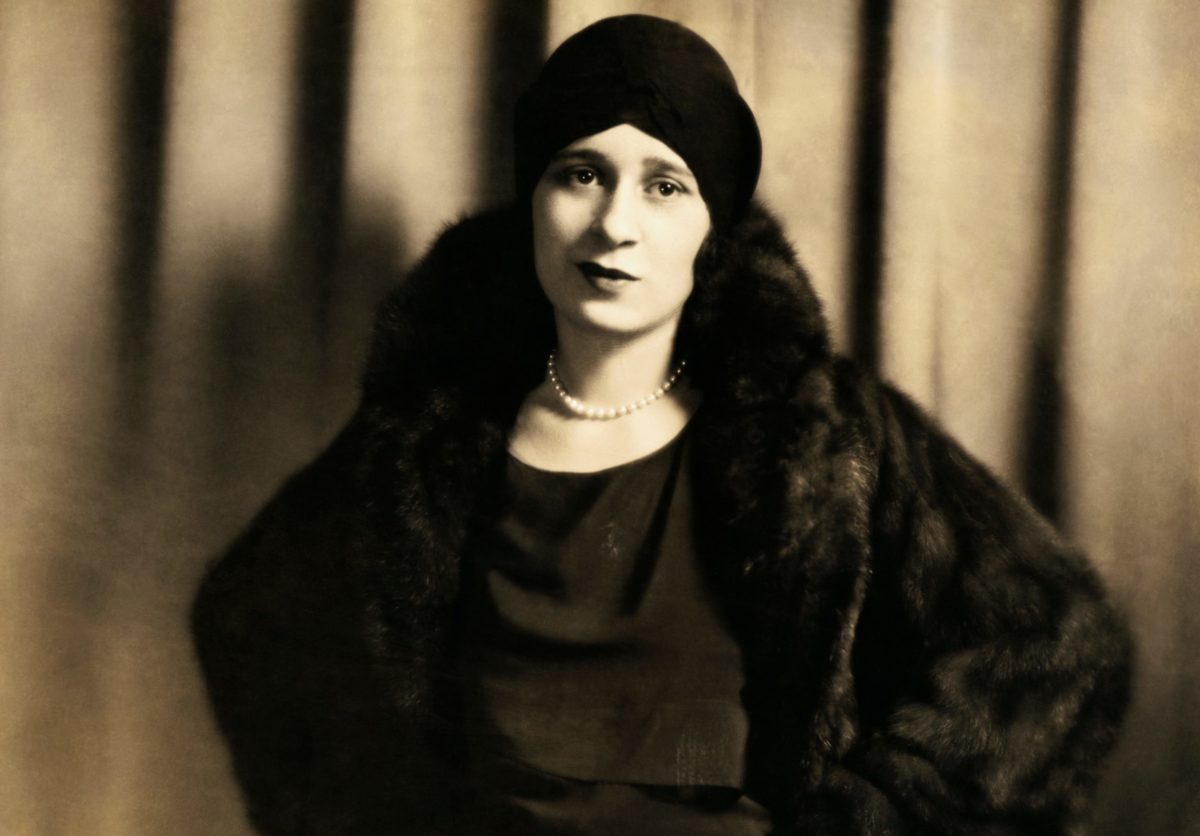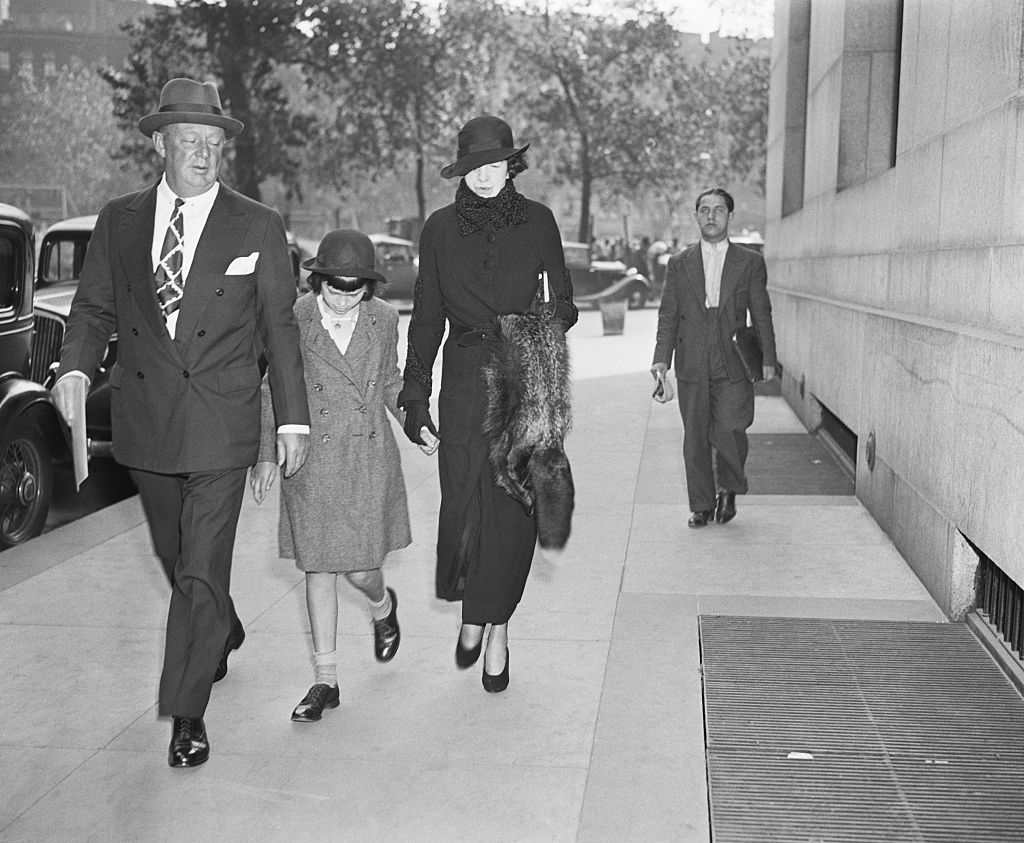The Trial Of A Century
The "trial of a century" began on October 1, 1934, and involved the Vanderbilts—one of the wealthiest families in America.
This dispute had everything to do with the custody of 10-year-old Gloria Vanderbilt. However, throughout the proceedings, the young heiress kept the most devastating secret.

Two Sisters-In-Law Go Head To Head
This famous trial was a custody battle between two sisters-in-law, with Gertrude Vanderbilt Whitney claiming that Gloria's mother, Gloria Morgan Vanderbilt, was "unfit."
It Was A Feast Of Scandal
For six brutal weeks, the proceedings dredged up unbelievably scandalous details about 29-year-old Gloria Morgan Vanderbilt's life—and the public ate them right up.
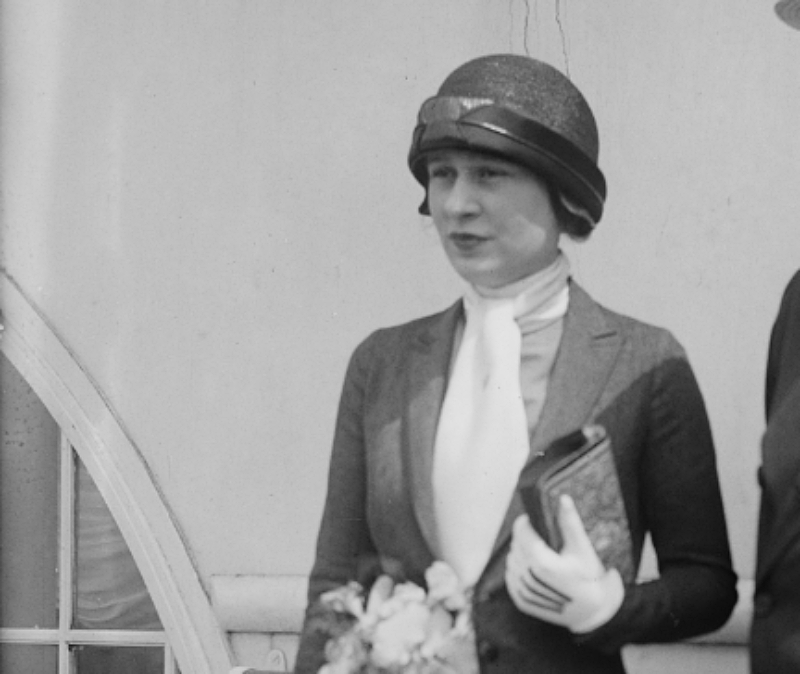 Bain News Service, Wikimedia Commons
Bain News Service, Wikimedia Commons
The Perfect Distraction
The Vanderbilt trial completely captivated American citizens. Amid the Depression era, the case became a welcome fascination for poor folks.
Dysfunction On Display
It allowed the average man to catch a rare glimpse of the dysfunction and darkness operating behind the scenes of one of the nation's richest families. It may have also distracted the poor from their own hardships.
The Vanderbilts Were Super Rich
The Vanderbilts had certainly built a reputation for themselves—one of extravagance, lavish parties, and sprawling estates. After all, Fifth Avenue had hosted ten of the Vanderbilt family's mansions.
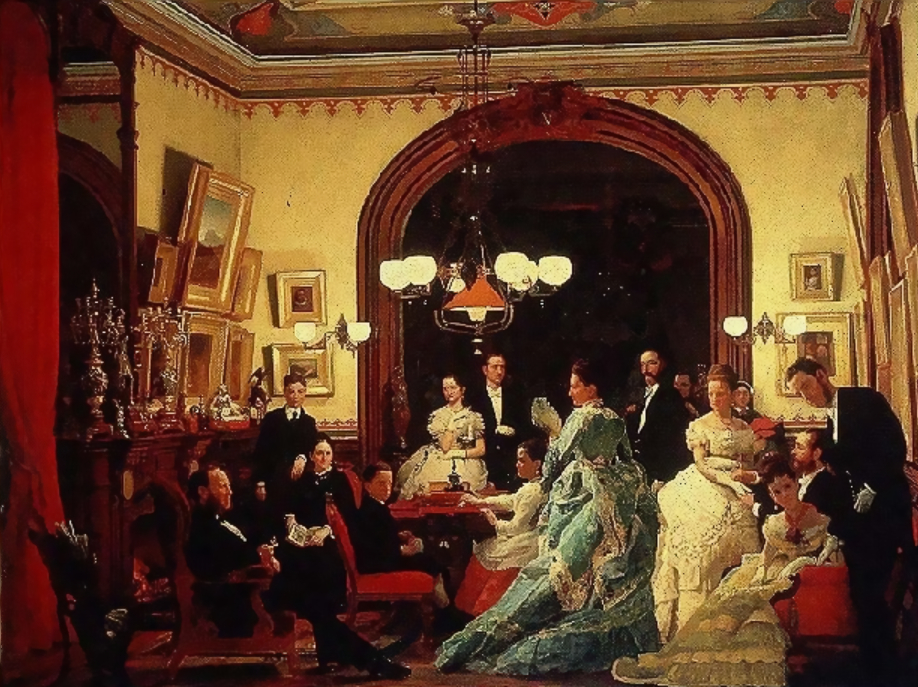 Unknown Author, Wikimedia Commons
Unknown Author, Wikimedia Commons
Knowing The Backstory
However, to truly understand the spectacle of the "trial of the century," one must know the backstory. Let's take a closer look at Gertrude Whitney and Gloria Morgan—and how they ended up in such a messy situation.
 Unknown Author, Wikimedia Commons
Unknown Author, Wikimedia Commons
The True Beginning
The roots of the Vanderbilt family trace back to Cornelius Vanderbilt, or "the Commodore," who built the family's wealth by becoming a railroad and shipping magnate. When he passed in 1877, the fortune he left behind was a jaw-dropping $100 million.
Little did he know, these riches would trickle down to his heirs—and cause some serious mayhem.
 Michel Vuijlsteke, Wikimedia Commons
Michel Vuijlsteke, Wikimedia Commons
All About Gertrude
Gertrude was the great-granddaughter of the famous Commodore—and thanks to her family's fortune, she enjoyed a lavish lifestyle, growing up on Fifth Avenue. However, though she was born into privilege, she did make some applaudable moves.
 Adolf De Meyer, Wikimedia Commons
Adolf De Meyer, Wikimedia Commons
She Used Her Money For Good
Stepping into womanhood, Gertrude became a sculptor and a patron of the arts. In fact, she used her money to help found the Whitney Museum of American Art in 1931. Her younger brother, on the other hand? He used his money to fund his debaucherous habits.
 Robert Henri, Wikimedia Commons
Robert Henri, Wikimedia Commons
The Frivolous Brother
Reginald Claypoole Vanderbilt didn't seem to have his sister's moral compass. For instance, when he got his hands on his $15.5 million inheritance on his 21st birthday, he completely lost his head.
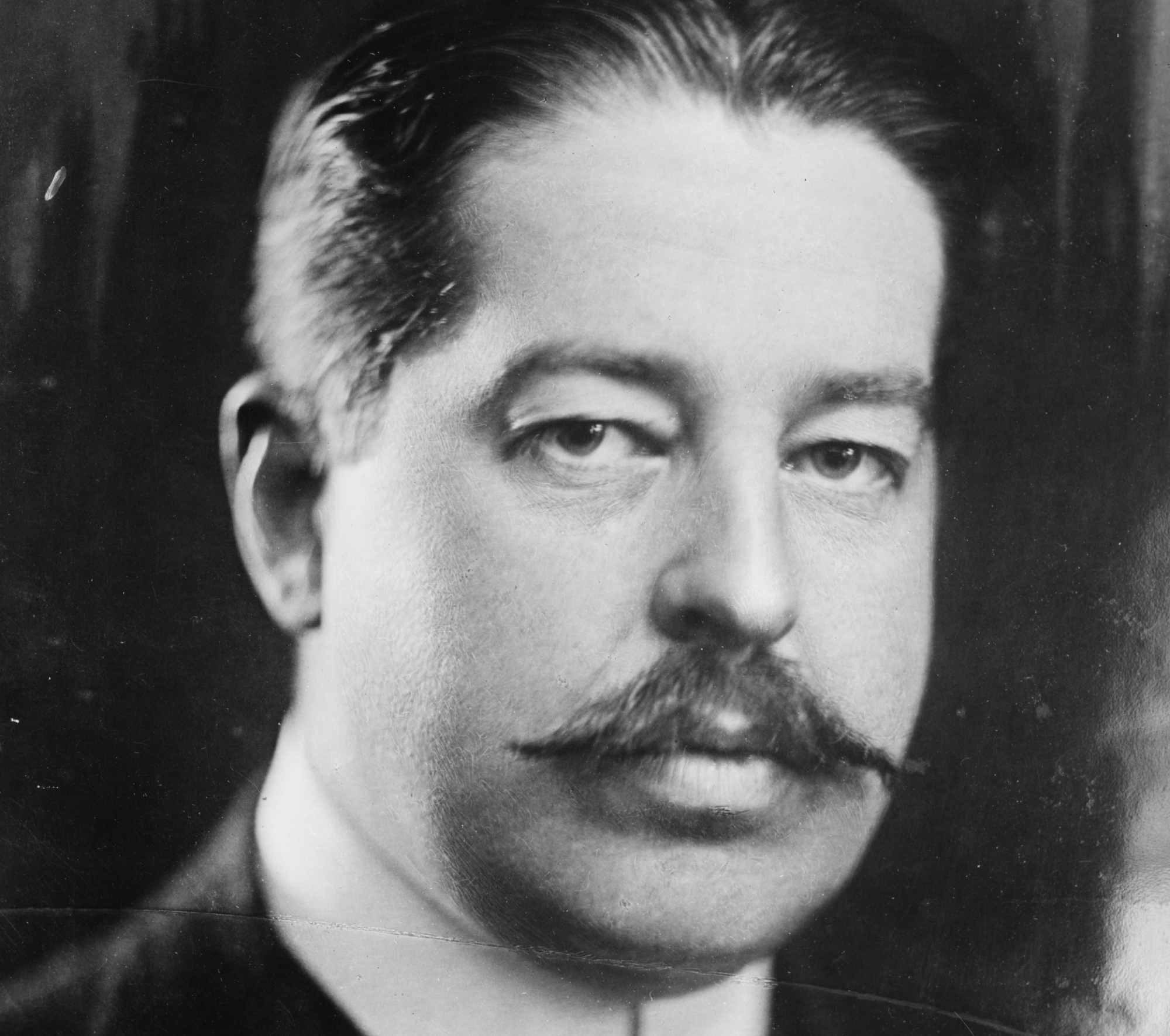 Bain News Service, Wikimedia Commons
Bain News Service, Wikimedia Commons
He Was A Gambler
Reginald brought his money straight to the gambling table, where he promptly wasted a whopping $70,000. But this was only the beginning of his problems.
 Bain News Service, Wikimedia Commons
Bain News Service, Wikimedia Commons
Enter: Gloria Morgan
Reginald also loved drinking and racehorses. At the age of 42, he made a decision that altered the Vanderbilt family forever—and made this story possible. He wed none other than 17-year-old, Gloria Morgan, future mother of little Gloria Vanderbilt.
 Edward Steichen, Wikimedia Commons
Edward Steichen, Wikimedia Commons
Different Ways Of Life
Already, there was an imbalance between the two siblings. Gertrude was the respected artist who spent her money wisely, while her brother Reginald was the wild child who married a teenager.
There Was Nothing Left For Her
When Reginald died of cirrhosis in 1925, his will shook his young wife to the core. Gloria Morgan couldn't believe it: Her husband had run through his sizable fortune, leaving her with nothing.
 Dorothy Wilding, Wikimedia Commons
Dorothy Wilding, Wikimedia Commons
She Had To Wait For Her Fortune
Only little Gloria Vanderbilt stood to gain something once she came of age: $2.5 million from a family trust. However, until she turned 21, she and her mother would have to make due by surviving on interest payments.
However, living off of the trust's interest was nothing to scoff at.
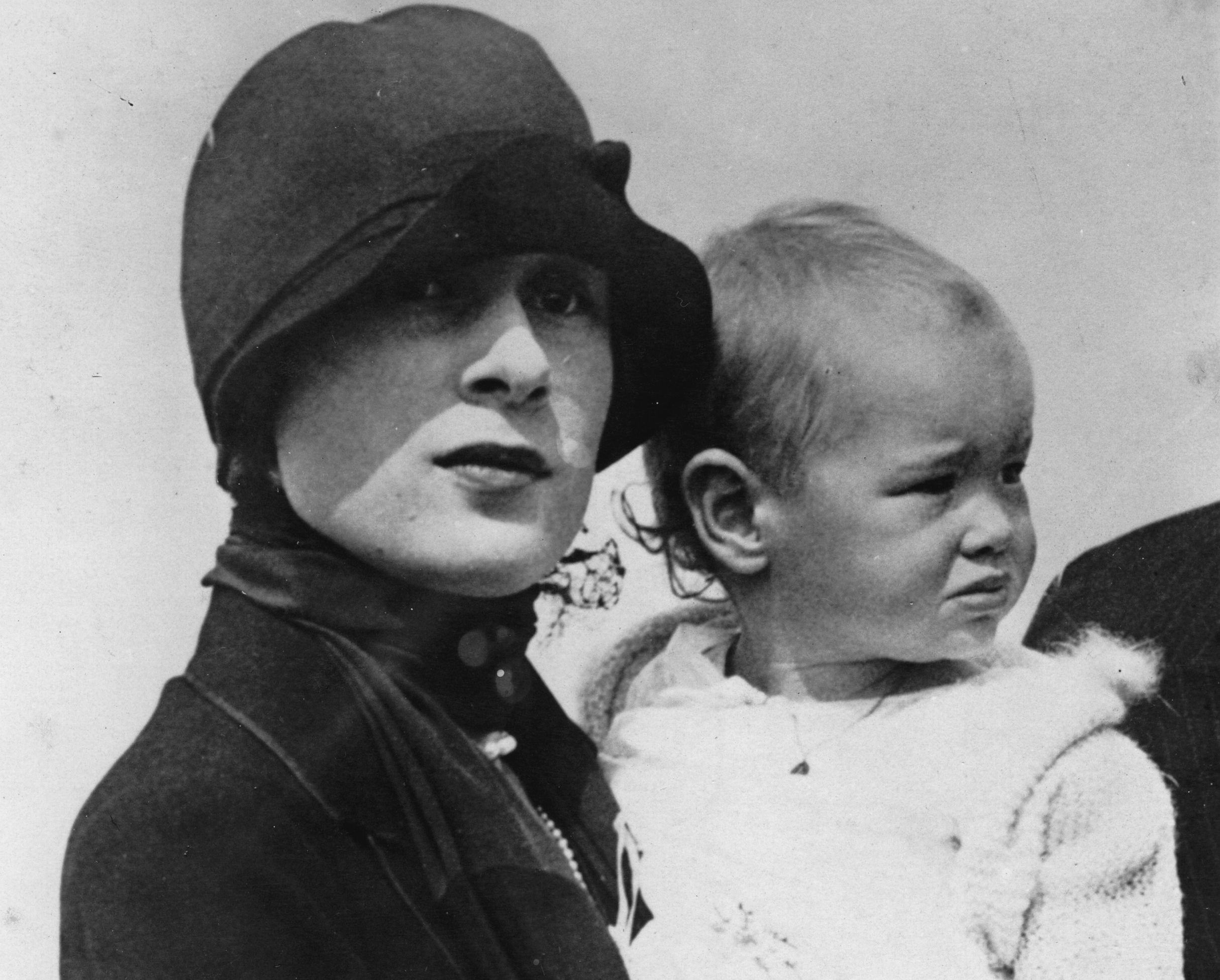 brandstaetter images, Getty Images
brandstaetter images, Getty Images
The Partying Continued
Gloria Morgan did just fine during the 1920s as the trust interest payments allowed her to keep her luxurious lifestyle. She traveled everywhere, from Paris to London to Monte Carlo, and beyond. But she ultimately strayed too far from her daughter.
She Never Saw Her Daughter
Gloria's life became a whirlwind of raucous parties, countless holidays, and shopping sprees—her social life brimmed with the rich and famous. On one occasion, she even entertained a passing engagement to a German prince.
In her absence, a live-in nurse looked after her neglected daughter, Gloria.
She Put Herself First
The live-in nurse cast a judgmental eye over Gloria Morgan's outrageous lifestyle, and was enraged that the woman never spared a moment for little Gloria. However, she wasn't the only one with her hackles up.
The Family Was Displeased
Other members of the Vanderbilt family weren't pleased that Gloria Morgan had followed so closely in her irresponsible husband's footsteps. And when little Gloria received a tonsillitis diagnosis, Gertrude Whitney stepped in.
 Archives of American Art, Wikimedia Commons
Archives of American Art, Wikimedia Commons
Her Aunt Came To Her Rescue
Following her tonsillectomy, Gloria went to live with her aunt Gertrude, while her mother jetted off to Europe. In the care of her doting aunt, Gloria's poor health turned around. This, however, was just the calm before the storm.
 Library of Congress, Wikimedia Commons
Library of Congress, Wikimedia Commons
An Act Of Desperation
Gloria's mother was in for a rude awakening. Because she'd left her daughter behind with her aunt, her monthly allowance took a sizable hit—and that just wouldn't do. Realizing that she needed to keep her daughter in her life—and probably worried that she might lose her—she did the one thing that set "the trial of the century" in motion.
Taking A Stand
Gloria Morgan returned to New York City with a new mission: She wanted to be her daughter's official guardian. You see, she had never been Gloria's official guardian because she'd been younger than 21 when she gave birth to her. However, when Gloria filed a court petition, Gertrude Whitney took a stand.
Gertrude opposed Gloria's court petition on the grounds of her being an "unfit" mother.
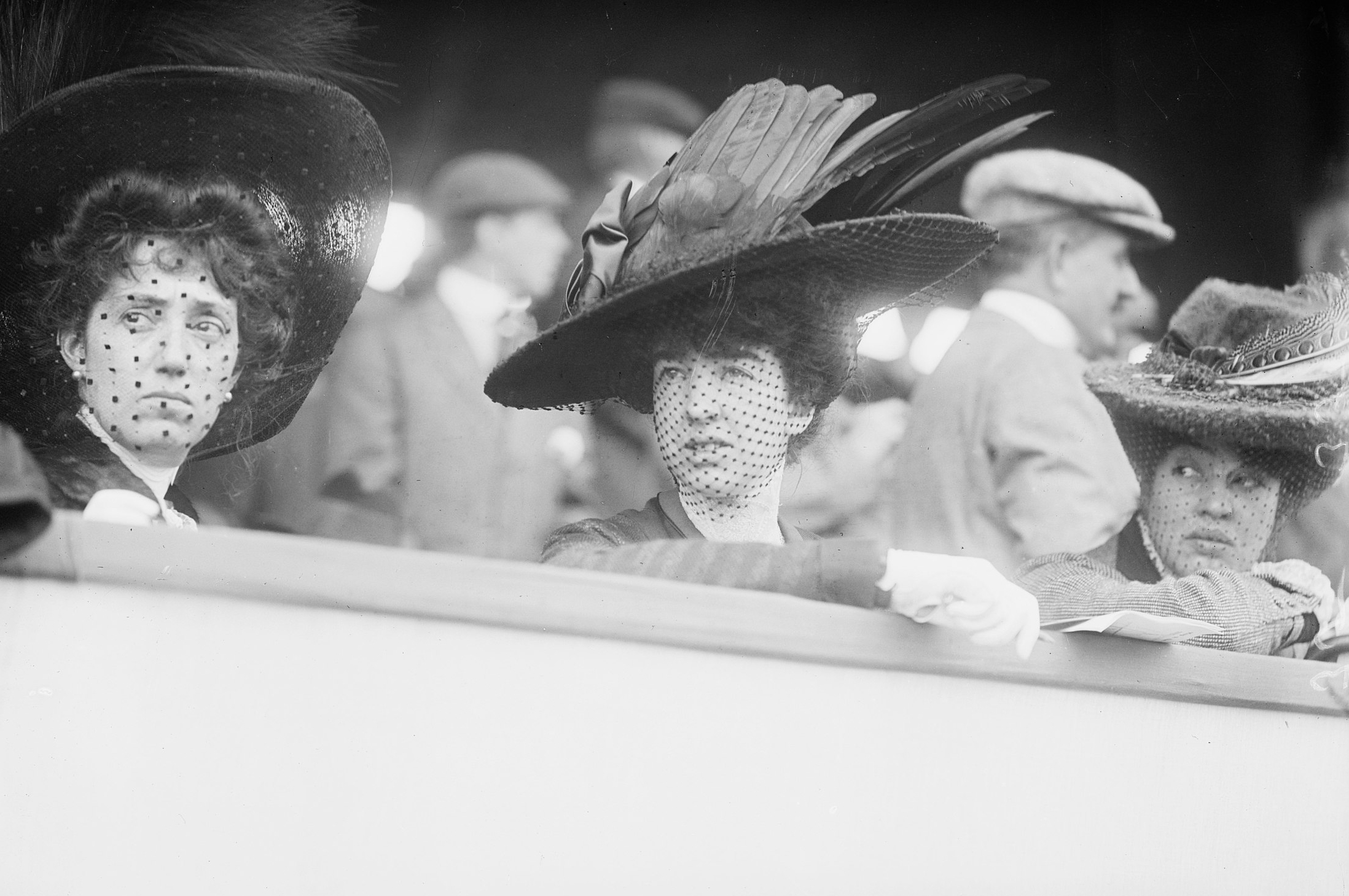 Bain News Service, Wikimedia Commons
Bain News Service, Wikimedia Commons
Surrounded By Sadness
The "trial of a century" kicked into action in 1934. At the time, the nation had to fight the stranglehold of an economic crisis. The average yearly family income was just $1,745, while the unemployment rate was 21 percent.
She Wasn't The Only One Losing Her Child
When it came to giving up one's children, the people of New York knew the feeling all too well. In 1932, institutions welcomed 20,000 children after they had been given up by their struggling parents; people just couldn't afford to take care of them anymore.
The Richest Woman Put Up A Fight
The same year that the two wealthy Vanderbilts went head to head, 100 people starved to death in the city of New York. The two realities starkly contrasted one another. After all, Gertrude Whitney was known as "the richest woman in the world."
 Bain News Service, Wikimedia Commons
Bain News Service, Wikimedia Commons
The Press Had Conflicting Views
The support for each woman was a mixed bag. Though some rooted for Gloria Morgan to win custody, some reporters ripped her apart for the scandalous nature of her personal life.
 London Films, Little Gloria... Happy at Last (1982)
London Films, Little Gloria... Happy at Last (1982)
They Spilled The Tea
One reporter from the Daily News, Julia McCarthy, wrote, "For five hours Mrs. Gloria Morgan Vanderbilt…listened to a tight-lipped nurse denounce her with virtual relish as a cocktail-crazed dancing mother…it was a blistering tale no skin lotion could soothe."
 London Films, Little Gloria... Happy at Last (1982)
London Films, Little Gloria... Happy at Last (1982)
The Press Wouldn't Have Free Reign Forever
The judge that oversaw the trial, John F. Carew, had initially let reporters oversee the court proceedings—but one jaw-dropping testimony changed his mind.
 Harris & Ewing, Wikimedia Commons
Harris & Ewing, Wikimedia Commons
Her Maid Threw Her Under The Bus
Gloria Morgan Vanderbilt had a French maid who did not hold back. She spilled her employer's dirtiest secrets: "Mrs. Vanderbilt was in bed reading a paper, and there was Lady Milford Haven beside the bed with her arm around Mrs. Vanderbilt's neck and kissing her just like a lover."
 Library of Congress, Wikimedia Commons
Library of Congress, Wikimedia Commons
She Had A Sordid Affair
The nurse claimed that Gloria Morgan had been in bed with none other than Lady Milford Haven—a woman wed to the king of England's cousin. This information was a bombshell in the courtroom, and going forward, the press no longer had access.
 Philip de László, Wikimedia Commons
Philip de László, Wikimedia Commons
Waiting For An Answer
The testimonies went on for seven weeks—and everyone following the case awaited the verdict with bated breath. The conclusion altered the course of little Gloria's life forever.
The Final Verdict
Ultimately, Judge Carew sided with Gloria's aunt and not her mother. Gertrude Whitney emerged from the scandalous trial as the victor, while Gloria Morgan Vanderbilt had to make do with weekend visitations.
 Bain News Service, Wikimedia Commons
Bain News Service, Wikimedia Commons
She Lost Her Income
The court also stripped Gloria Morgan of something else: She would no longer be the administrator of her daughter's trust fund. However, something unsettling had gone on behind the scenes.
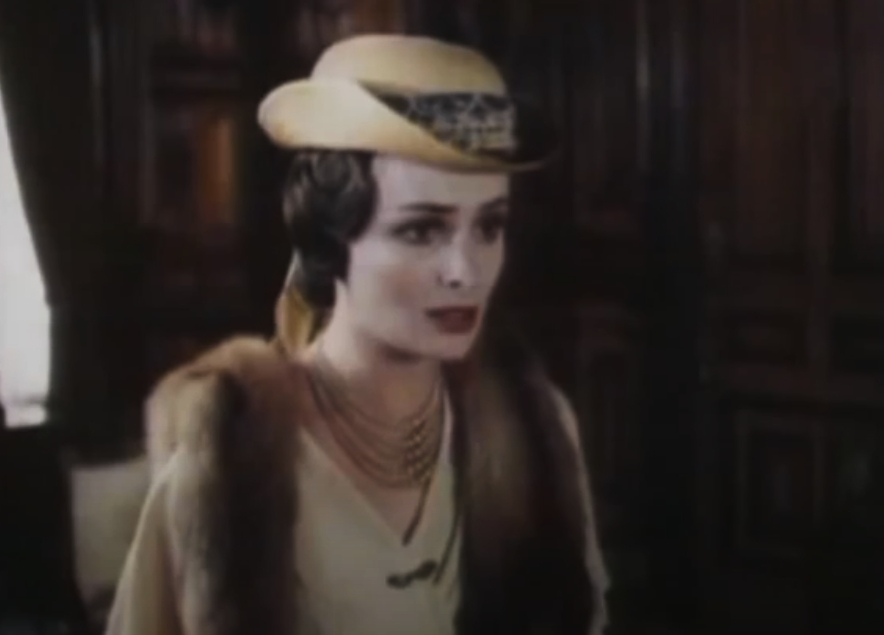 London Films, Little Gloria... Happy at Last (1982)
London Films, Little Gloria... Happy at Last (1982)
She Confused The Judge
In the courtroom, little Gloria was something of a conundrum. Her mother's attorneys had come to the table with letters, proving that Gloria truly adored her mother. However, when Judge Carew spoke to the young girl alone, she had a shockingly different response.
She Had Two Stories To Tell
Speaking with Judge Carew alone—without the prying eyes of the public, press, or lawyers—Gloria insisted that she despised her mother, and was even terrified of her. So, what was the truth?
The Attorney Coached Her
It wasn't until Gloria Vanderbilt wrote her memoir The Rainbow Comes and Goes that she set the record straight. Apparently, her aunt's attorney had coached her. She'd attended special "sessions" where she learned exactly what to say. But that wasn't the most disturbing part.
 Unknown Author, Wikimedia Commons
Unknown Author, Wikimedia Commons
She Made Up Stories About Her Mother
Whenever 10-year-old Gloria spoke to the judge, she was a mouthpiece for her aunt's agenda. This meant that she even concocted stories out of thin air that cast her mother in an unfavorable light.
It Wasn't True
For one of her false stories, Gloria claimed that her mother's romantic partner—the German prince—had physically harmed her. In her memoir, she remembered, "I went over the lines I'd rehearsed with Crocker again and again. I hoped I wouldn't forget anything."
The Story Wasn't Over Yet
Two years after Gertrude Whitney gained custody of Gloria, the case reopened and went before the State of New York's Supreme Court. This time, Gloria Morgan enjoyed a small win. She could spend a bit more time with her daughter than the original agreement. But fate had another twist in store for her.
She Lost Her Allowance
In 1946, Gloria Morgan found her name splashed all over the headlines once again. This time, it was because her daughter had rescinded her $21,000 yearly allowance. Gloria Vanderbilt explained that her mother could work for her money and that she would be donating the allowance to charity instead.
Life Went On
Despite the turbulent nature of her young life, Gloria Vanderbilt undoubtedly lived a life of privilege. After the trial, she had her own extraordinary life ahead of her—one that included a successful career, four marriages, and four children.
 United States Steel Corporation., Wikimedia Commons
United States Steel Corporation., Wikimedia Commons
It Continued To Entertain The Masses
Even after the trial had concluded, it continued to draw interest—and still does today. For instance, it inspired the 1980 bestseller Little Gloria... Happy at Last by Barbara Goldsmith, which in turn, led to a miniseries. The miniseries featured some major names like Christoper Plummer and Bette Davis. But that's not all.
 London Films, Little Gloria... Happy at Last (1982)
London Films, Little Gloria... Happy at Last (1982)
"Nothing Like It Had Ever Happened Before"
Little Gloria Vanderbilt went on to have a very famous son—none other than Anderson Cooper. In 2016, mother and son promoted their book, and Cooper even referred to the notorious trial as "the O.J. case of its day, except bigger, because nothing like it had ever happened before."
 Bart Everson, CC BY 2.0, Wikimedia Commons
Bart Everson, CC BY 2.0, Wikimedia Commons
Her Mother Was A Stranger
When it came to her infamous mother, Gloria later wrote that she was a "beautiful stranger, glimpsed only fleetingly."






